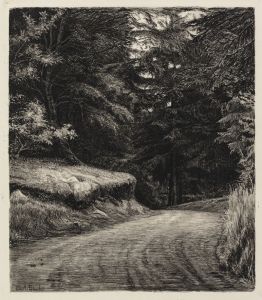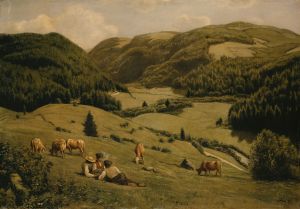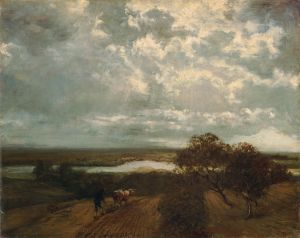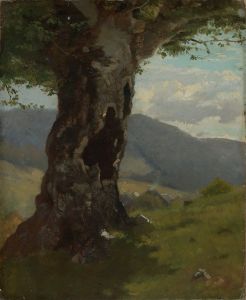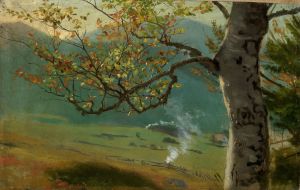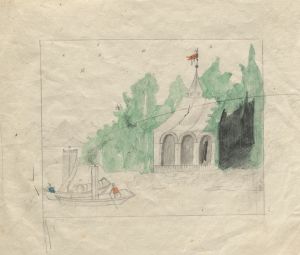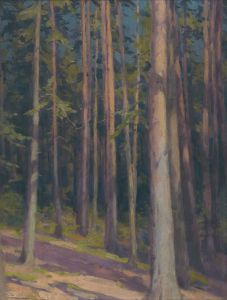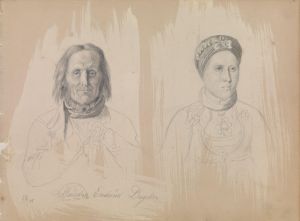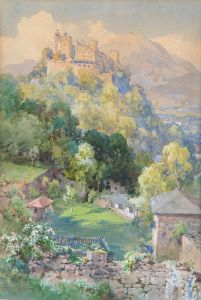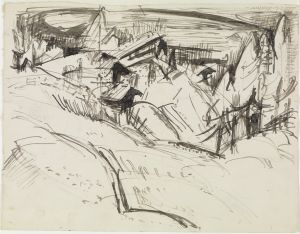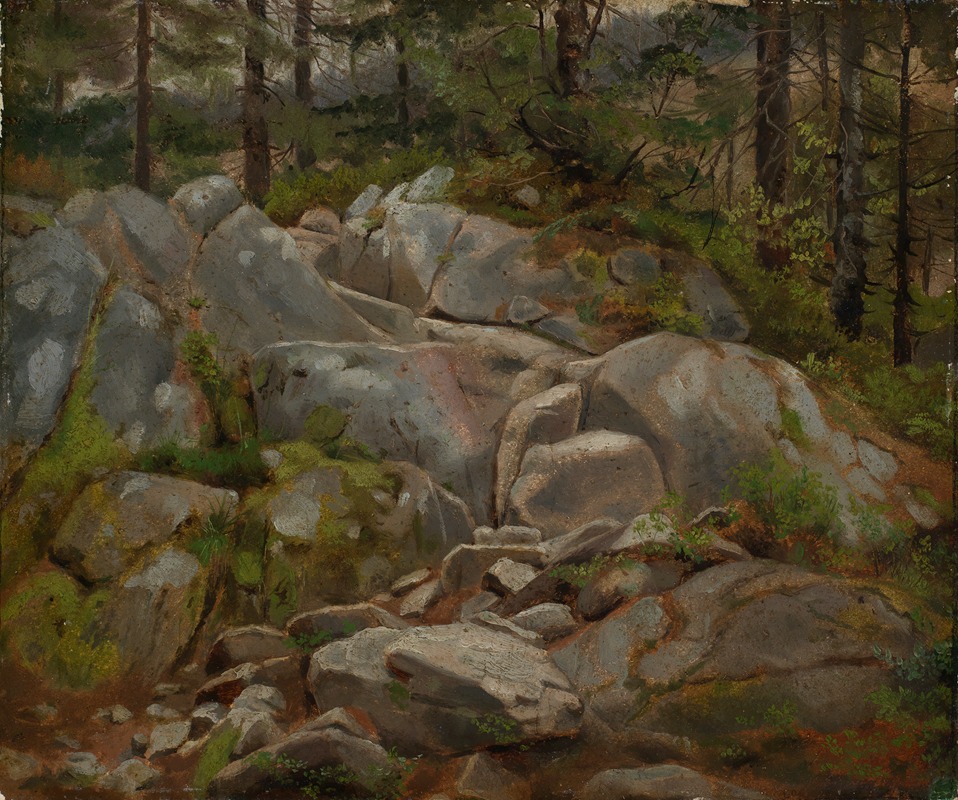
Felsblöcke mit Tannenstämmen
A hand-painted replica of Hans Thoma’s masterpiece Felsblöcke mit Tannenstämmen, meticulously crafted by professional artists to capture the true essence of the original. Each piece is created with museum-quality canvas and rare mineral pigments, carefully painted by experienced artists with delicate brushstrokes and rich, layered colors to perfectly recreate the texture of the original artwork. Unlike machine-printed reproductions, this hand-painted version brings the painting to life, infused with the artist’s emotions and skill in every stroke. Whether for personal collection or home decoration, it instantly elevates the artistic atmosphere of any space.
Hans Thoma (1839–1924) was a German painter associated with the Romantic and Realist movements. His works often depicted landscapes, rural life, and scenes inspired by German folklore and mythology. One of his paintings, Felsblöcke mit Tannenstämmen (translated as "Rock Blocks with Fir Trunks"), exemplifies his focus on nature and his ability to capture the serene beauty of the German countryside.
The painting portrays a natural scene featuring large rock formations surrounded by tall fir trees. Thoma's attention to detail is evident in the textures of the rocks and the intricate depiction of the tree trunks and foliage. The composition reflects his deep appreciation for the natural world, a recurring theme in his body of work. The subdued color palette and realistic rendering of the landscape suggest a quiet, contemplative atmosphere, inviting viewers to immerse themselves in the tranquility of the scene.
Hans Thoma was influenced by the Romantic tradition, particularly the works of Caspar David Friedrich, as well as the Realist movement, which emphasized the truthful representation of everyday life and nature. His art often bridges these two styles, combining the emotional resonance of Romanticism with the observational precision of Realism. Felsblöcke mit Tannenstämmen is a testament to this synthesis, showcasing both the grandeur and simplicity of the natural environment.
Thoma's career spanned several decades, during which he gained recognition in Germany and beyond. He served as the director of the Karlsruhe Academy of Fine Arts and was celebrated for his contributions to German art. While his work was highly regarded during his lifetime, his reputation experienced fluctuations in the years following his death. Today, his paintings are appreciated for their technical skill and their ability to evoke a sense of connection to nature.
Specific details about the creation date or the current location of Felsblöcke mit Tannenstämmen are not readily available. However, the painting is representative of Thoma's broader oeuvre, which frequently explored themes of nature and rural life. His works can be found in various museums and collections, particularly in Germany, where he remains an important figure in 19th-century art history.
This painting is a fine example of Hans Thoma's dedication to capturing the essence of the natural world, reflecting his artistic philosophy and his place within the broader context of German art during his time.





